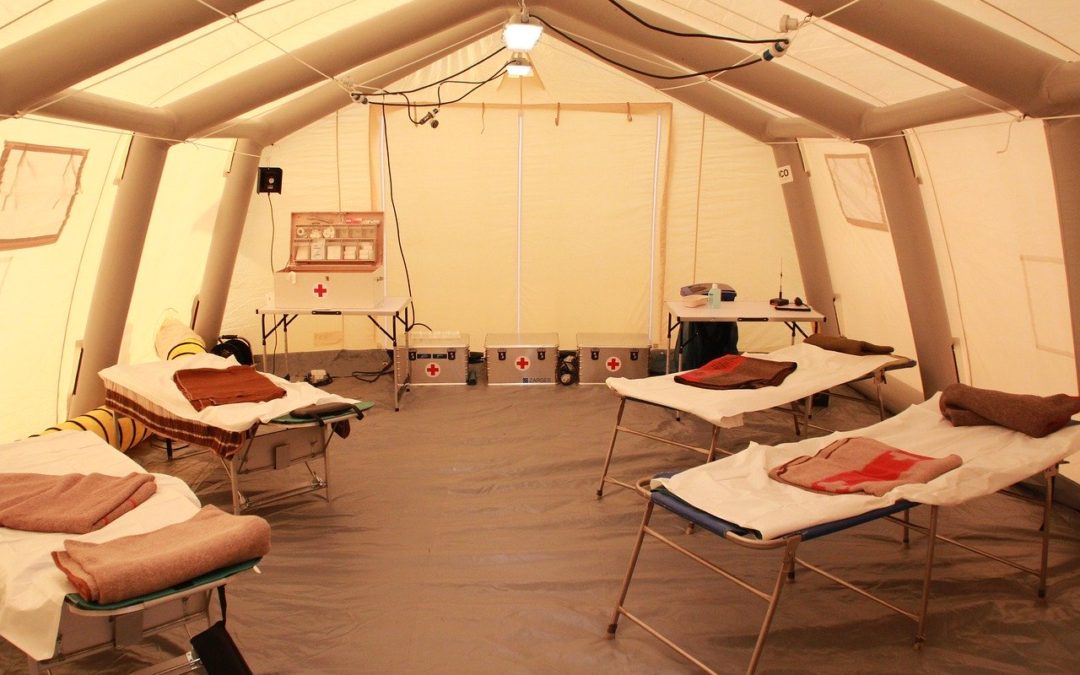Factors to Consider in Setting up Temporary Medical Facilities
by Sharon Jones
The number of confirmed COVID-19 patients in the Philippines continues to rise. The problems related to the pandemic continue to worsen, including the full capacity of hospitals, lack of proper isolation facilities for persons under investigation (PUIs) and persons under monitoring (PUMs), and lack of personal protective equipment (PPEs) for frontliners.
To help assist hospitals that handle COVID-19 related cases, the Philippine Red Cross put up a medical field tent at the National Kidney and Transplant Institute in Quezon City. The city administration of Imus, Cavite, put up at least five field hospitals, each equipped with ten beds, an oxygen tank, and other health amenities.
If the needs arise, local government units (LGUs) and hospitals might need to modify their interior space or set up more temporary medical facilities. In this case, they must consider the following elements outlined by the U.S. Assistant Secretary for Preparedness and Response Technical Resources, Assistance Center, and Information Exchange (ASPR TRACIE).
Planning
The surge of patients is expected to continue amid the COVID-19 pandemic. For this issue to be addressed, it is critical to have a hospital-wide approach and integration with concerned departments and supervisors. Hospitals and healthcare facilities must discuss the emergency department volume versus the expected amount of patients, coordinate discharge plans, and address staffing issues. The cost of operation must also be considered. Additional expenses may include lighting, security, additional staffing, and rental or acquisition of tents.
Thresholds
Advance planning and analysis of data from previous similar events will help hospitals establish their thresholds in their additional temporary facilities. Considerations may be made based on the volume of the emergency department or patients that need to be admitted. LGUs can expand their hospital capacity by renting or acquiring medical tents with the help of trusted tent manufacturers in the Philippinesthat can cater to their diverse needs.
Coordination
Hospitals, LGUs, and the national government must be well-coordinated, especially if they plan to set up the temporary facilities in locations that might potentially affect traffic flow. Moreover, they should work well with the local barangays to help minimize the influx of patients by educating citizens about proper health care and alternative options to a hospital visit.
Considerations for Staff and Patients’ Behavioral Health Needs
This pandemic has claimed lives and caused anxiety, worry, and fear. With the rising number of PUIs and PUMs and the lack of testing kits and hospital facilities, it is understandable that the patients, along with their families and the hospital staff, feel stressed and tired.
Patients and their families are concerned about their health and their healthcare, and receiving treatment in a non-traditional setting may add to their stress. Meanwhile, hospital staff might be working extra shifts or might know the patients, so they are likely overworked and stressed. They might feel more stressed when they need to provide care in an unfamiliar environment, such as a temporary field hospital.
Thus, LGUs and hospitals must provide for the behavioral needs of patients and staff. They can do this by encouraging short breaks and stocking hospital break rooms with healthy drinks and snacks. They can also provide antibacterial wipes or alcohol and post self-care and proper hygiene reminders. Maintaining an adequate supply of PPEs, encouraging its use, and providing on-site faith-based support for both patients and staff can aid them in this situation.
With these considerations in mind, LGUs can set up better temporary medical sites and be a step closer to winning the battle against COVID-19.


Recent Comments